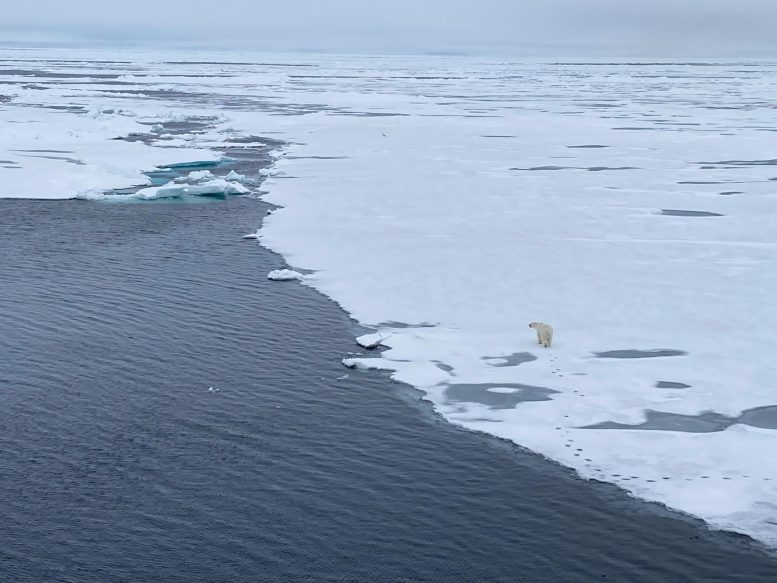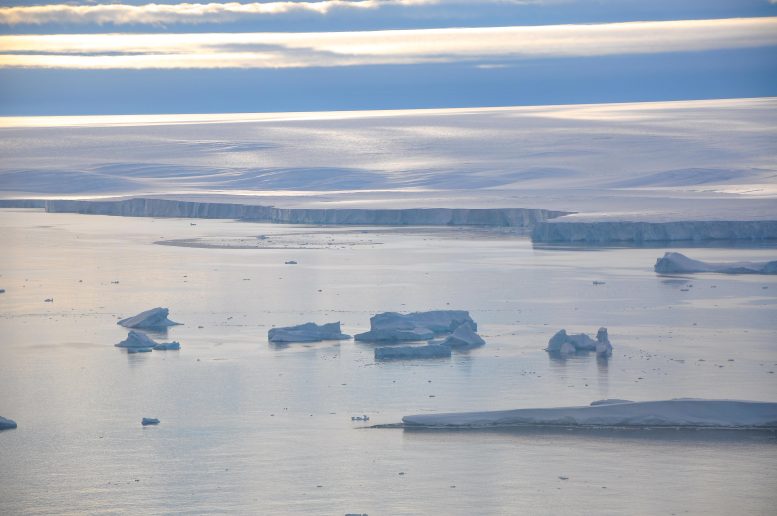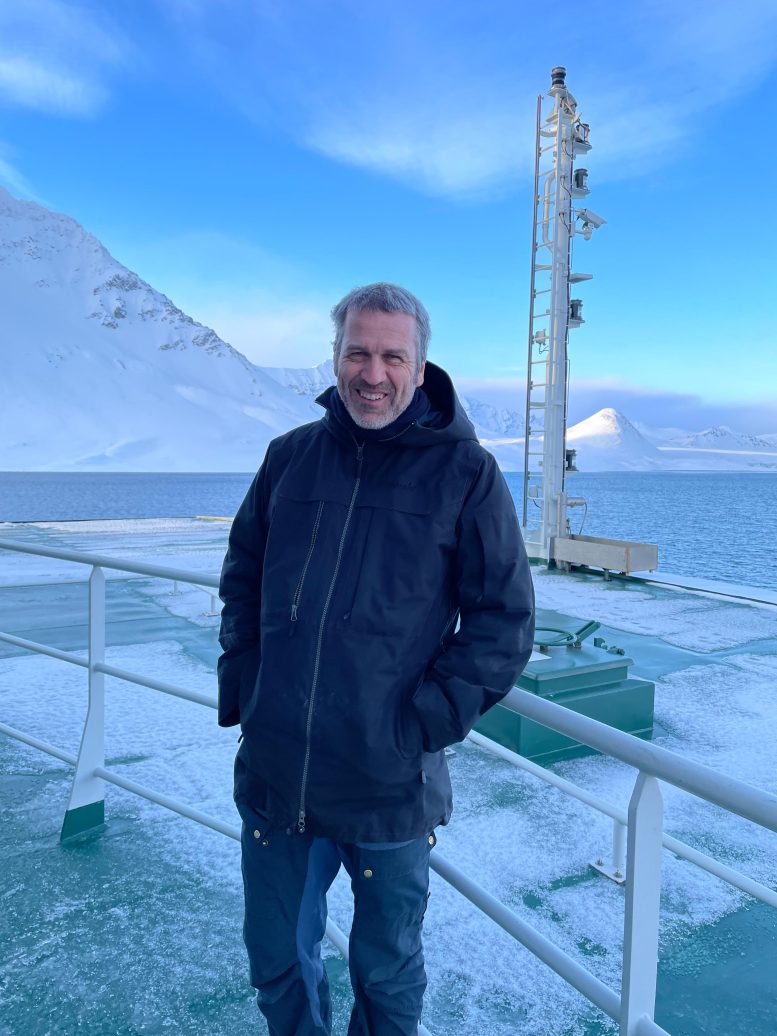
Evidence of algae growth and climate simulations reveal the Arctic had seasonal ice, not a permanent ice shelf, for much of the past 750,000 years. These insights challenge long-standing theories.
For a long time, researchers have debated whether a thick, continuous ice shelf once blanketed the entire Arctic Ocean during the most extreme ice ages. However, a new study published in Science Advances challenges this theory, finding no supporting evidence for a vast ice shelf approximately 1 kilometer thick.
Instead, the findings suggest that the Arctic Ocean was covered by seasonal sea ice, which would have allowed for patches of open water and conditions capable of sustaining life, even during the coldest periods of the last 750,000 years.
This discovery provides important clues about how the Arctic has previously responded to climate change and offers valuable context for anticipating future changes in the region.

Tiny traces of life in ancient mud
The research, conducted under the European Research Council Synergy Grant project Into the Blue – i2B, focused on sediment cores retrieved from the seafloor in the central Nordic Seas and the Yermak Plateau, located north of Svalbard. These sediments contain microscopic chemical traces left behind by ancient algae that once inhabited the ocean. Some species of algae thrive only in open water, while others are adapted to live beneath seasonal sea ice that melts and reforms annually.
“Our sediment cores show that marine life was active even during the coldest times,” explained Jochen Knies, the study’s lead author from UiT The Arctic University of Norway and co-leader of the Into the Blue – i2B project. “That tells us there must have been light and open water at the surface. You wouldn’t see that if the entire Arctic was locked under a kilometre-thick slab of ice.”
A crucial piece of evidence was the presence of a molecule called IP25, which is produced by algae that live in seasonal sea ice. Its consistent detection in the sediment layers suggests that the Arctic experienced recurring sea ice cycles, rather than being permanently sealed by a solid ice cover.

Simulating ancient Arctic climates
To further investigate the geological evidence, the researchers ran simulations using the AWI Earth System Model, a high-resolution climate model. They focused on two of the coldest periods in recent Earth history: the Last Glacial Maximum around 21,000 years ago and another major glaciation roughly 140,000 years ago, when extensive ice sheets blanketed much of the Arctic.
“The models support what we found in the sediments,” said Knies. “Even during these extreme glaciations, warm Atlantic water still flowed into the Arctic gateway. This helped keep some parts of the ocean from freezing over completely.”
The simulations also revealed that the ice cover was not constant. Instead, it varied with the seasons, creating ice-free areas where sunlight could penetrate the ocean surface and support marine life. These findings reshape our understanding of historical Arctic environments and carry important implications for forecasting future climate trends. By learning how sea ice and ocean currents reacted to past climate extremes, scientists can enhance the accuracy of models predicting future changes in a warming world.
“These reconstructions help us understand what’s possible—and what’s not—when it comes to ice cover and ocean dynamics,” said Gerrit Lohmann, co-author of this study, based at Alfred Wegener Institute, Helmholtz Centre for Polar and Marine Research (AWI) and co-lead of Into The Blue – i2B. “That matters when trying to anticipate how ice sheets and sea ice might behave in the future.”

Re-thinking the giant ice shelf theory
Some scientists have argued that features on the Arctic seafloor suggest that a huge, grounded ice shelf once covered the entire ocean. But this new study offers another explanation.
“There may have been short-lived ice shelves in some parts of the Arctic during especially severe cold phases,” said Knies. “But we don’t see any sign of a single, massive ice shelf that covered everything for thousands of years.”
One possible exception could have occurred about 650,000 years ago, when biological activity in the sediment record dropped sharply. But even then, the evidence points to a temporary event, not a long-lasting frozen lid over the Arctic.
Understanding the Arctic’s future
The study sheds new light on how the Arctic has behaved under extreme conditions in the past. This matters because the Arctic is changing rapidly today. Knowing how sea ice and ocean circulation responded to past climate shifts helps scientists understand what might lie ahead.
“These past patterns help us understand what’s possible in future scenarios,” said Knies. “We need to know how the Arctic behaves under stress—and what tipping points to watch for – as the Arctic responds to a warming world.”
Reference: “Seasonal sea ice characterized the glacial Arctic-Atlantic gateway over the past 750,000 years” by Jochen Knies, Lukas Smik, Pengyang Song, Monica Winsborrow, Henning A. Bauch, Gerrit Lohmann and Simon T. Belt, 4 July 2025, Science Advances.
DOI: 10.1126/sciadv.adu7681
This research is part of the European Research Council Synergy Grant project Into the Blue – i2B and the Research Council of Norway Centre of Excellence, iC3: Centre for ice, Cryosphere, Carbon, and Climate.
Never miss a breakthrough: Join the SciTechDaily newsletter.
3 Comments
It’s comforting to know that seasonal sea ice that is present today was also present in the past.
But for Man’s effects that made this Climate Change so swift compared to most others due to our dirty emissions, it may be happening at a far slower rate.
“… so swift compared to MOST others …”
I take it that you are acknowledging that the current warming may not be the fastest ever. That weakens your argument that Man’s emissions are responsible for warming at an ‘unnatural’ rate. There is also an issue of time acting like a low-pass filter, suppressing the height of apparent peaks and valleys of historical temperature changes, and widening them, thus making the changes appear slower than they actually were. Why is it so rare to see estimates of the uncertainty (margin of error) in climatological measurements?